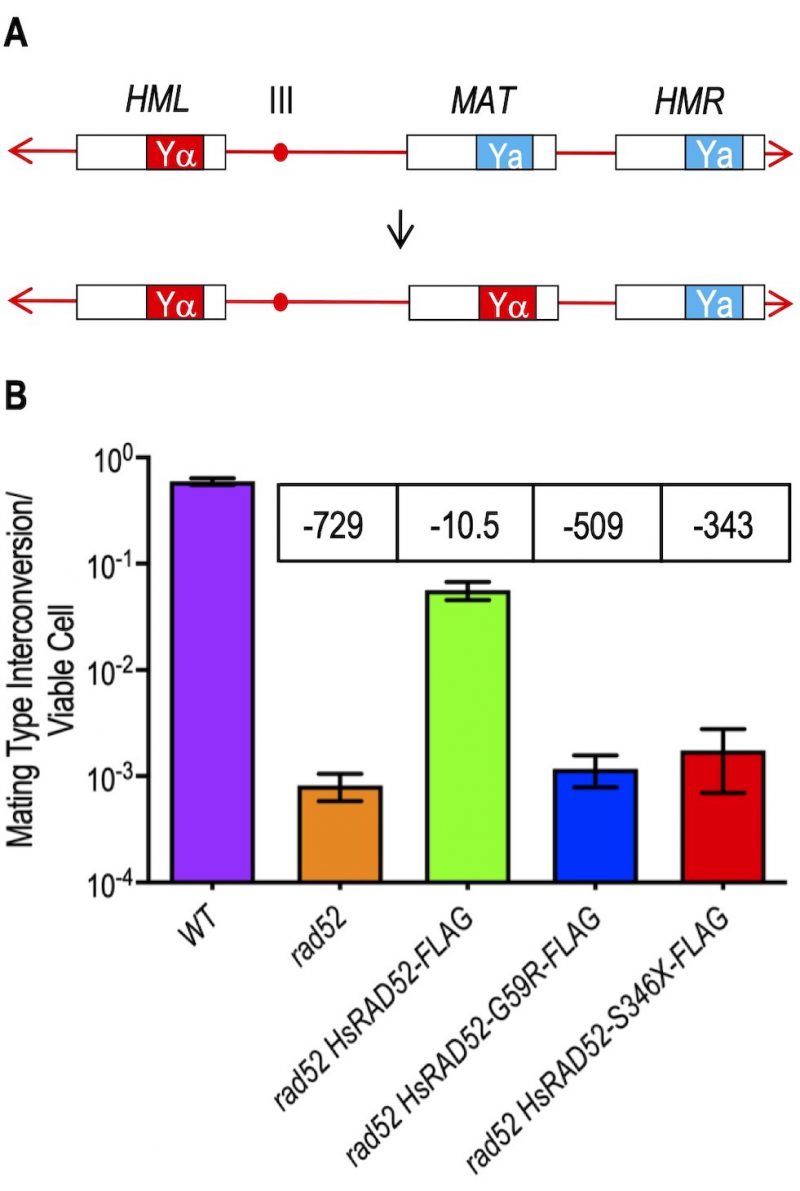Back to article: Variants of the human RAD52 gene confer defects in ionizing radiation resistance and homologous recombination repair in budding yeast
FIGURE 3: The adh1::HsRAD52-G59R-FLAG and adh1::HsRAD52-S346X-FLAG alleles do not suppress the MTI defect of rad52 mutant yeast cells. (A) Cartoon depicting MTI. DSB formation by HO endonuclease cutting at the HO cut site on the centromere distal edge of the Ya sequence (blue box) at the MAT locus on chromosome III precipitates the exonucleolytic removal of “a” mating type information prior to its replacement by unidirectional transfer of “α” mating type information from the Yα sequence (red box) of the flanking, intact but silent HML locus. This results in the switching of the cell from the “a” mating type to the “α” mating type. (B) The adh1::HsRAD52-G59R-FLAG and adh1::HsRAD52-S346X-FLAG alleles confer defects in MTI. Single colonies of haploid wild-type (ABX3817-15B), rad52 (ABX3817-7D), rad52 adh1::HsRAD52-FLAG (ABX3977-10C), rad52 adh1::HsRAD52-G59R-FLAG (ABX3985-55B), and rad52 adh1::HsRAD52-S346X (ABX3994-18D) strains were used to inoculate at least 10 one milliliter YPGL cultures and grown overnight. Following a period of expression of HO endonuclease, appropriate dilutions were plated onto YPD medium, incubated for three days at 30°, and the number of colonies counted. Colonies were replica plated to fresh YPD plates, printed with a lawn of the haploid R113a mating type tester strain, printed plates incubated overnight at 30°C and then replica plated onto SD plates, which were incubated overnight at 30°C. Frequencies of MTI were determined by dividing the number of diploid patches arising on the SD plates by the number of colonies counted on the original YPD plates. Mean frequencies of MTI and 95% confidence intervals were plotted against genotype. Fold differences below (-) the wild-type frequency of MTI for each strain are indicated in boxes above the bar for each mean frequency.

